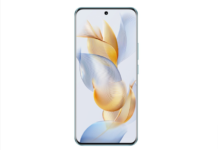Windows operating systems are a major influence on the way we interact with technology. As technology and time progress, these systems must also evolve and retire. Microsoft’s Windows 8 platform was a popular platform when it first launched, but has now reached its end-of-life.
What does ‘End Of Life’ mean?
In the context of software the term “End of Life” (EOL) refers to the point at which the software is no longer being supported by its developer. It usually means that technical support and automatic updates are no longer available, including security updates. Users can suffer as they are more vulnerable to new security threats. Microsoft releases information on the product lifecycles to help users prepare for changes.
When did Windows 8 reach its EOL date?
Microsoft Windows 8, which was launched in October of 2012, went through its end-of life process on 12 January 2016. It was a major event, as Microsoft no longer supported this popular operating system. Windows 8 users had to upgrade to Windows 8 or an updated version in order to receive support and updates.
Windows 8 users should be aware of the implications of EOL.
Windows 8’s EOL has significant implications. The first is the lack of support. Microsoft will not address any performance or bug issues. Your operating system may still work, but Microsoft won’t fix them.
Second, and perhaps more importantly, the absence of security updates puts your system and data in danger. Microsoft’s failure to release security patches leaves your system vulnerable as new vulnerabilities are found over time. Windows 8 can potentially expose your data if you continue to use it beyond the end of life date.
Upgrade Your Home or Business
It is important to upgrade from an EOL operating system such as Windows 8. Windows 10 and Windows 11, its successor, have been around for a while and are both significant improvements over Windows 8 The newer versions offer enhanced and modern features, improved security and performance. Upgrade to the most recent Windows version to ensure your PC is secure and to access the latest technological advances.
How to Upgrade from Windows 8
Upgrades to Windows 8 are relatively simple. Upgrades usually involve purchasing the license, downloading and installing the newer OS. Before installing, make sure you have backed up all important data.
Conclusion
Windows 8 was an important OS for Microsoft, with new features and interfaces which redefined user experience. As with all software, Windows 8 has reached its end. Microsoft has upgraded to newer systems with better security and capabilities.
A EOL status doesn’t mean that your operating system is inoperable; it simply means that the vendor will no longer provide support or updates. Upgrade to the latest version of Windows if you still use Windows 8 to keep your system secure and to benefit from improvements and new features. Technology is always evolving, so clinging onto outdated systems will leave you vulnerable.




